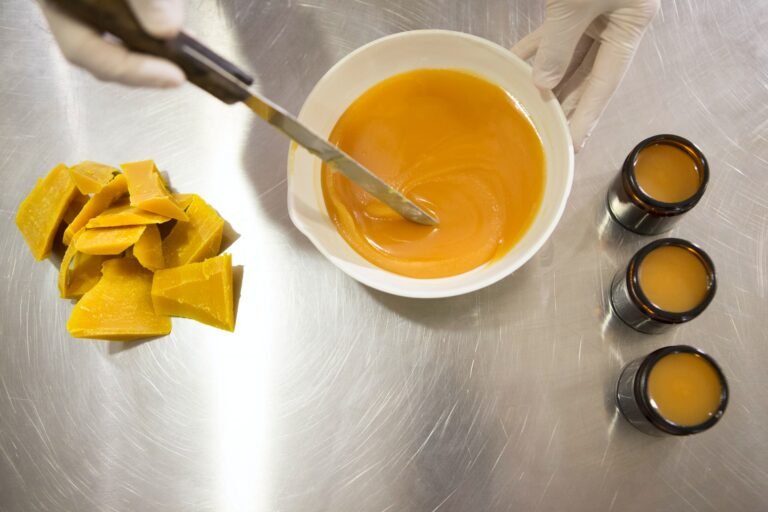How Do I Prevent My Polymer Clay Sculptures From Breaking? (All you need to know)
Unlike most crafts, polymer clay sculpting does not require special tools, works well for people of all ages and skill levels, and is a cheap main or alternative material for various artistic expressions. But the biggest difficulty with this hobby is that often, creations break. So what can you do to avoid this?
Do not take clay immediately out of the oven since the curing process is completed only when the polymer has cooled. Also important to not use anchors for small sculptures. If the anchor breaks, the broken area is a jumble of bent wires, with many small pieces that are difficult to repair.
I have been doing this for a very long time and will answer some of the questions that many of you may have and help you become a better sculptor. So stick around, if you want to learn some cool stuff.
How Do You Keep Polymer Clay From Breaking?
Unconditioned clay is much more likely to crack when you put it in the oven and expose it to high temperatures. You might run into some issues if you don’t thoroughly condition it, you should make sure to completely condition your clay before placing it in the oven.
Conditioning involves kneading and warming polymer clay to get it ready for use. You can complete the conditioning process manually or through a clay conditioning machine.
The amount of curing time it will require depends on the thickness of the clay and the brand of clay. After conditioning the clay, you should check it for trapped air bubbles that can cause cracks.
Since these air bubbles often form in the conditioning process, you must take steps to prevent them from appearing.
One step you can take to prevent bubbles is to tear your clay instead of folding it to prevent the clay from trapping air. If you see any bubbles forming while you condition it, pop or cut them immediately, as they can hide in the clay when left unchecked. You can also stretch or pull on your sheet of clay to release air into the material.
Once you place your clay in the oven, maintain a constant temperature to prevent cracks from forming. Many countertop ovens lack proper seals that ensure a consistent temperature. The absence of seals can cause your oven’s temperature to swing wildly, with your oven’s temperature dipping down and then spiking up.
These temperature fluctuations can lead to an uneven bake and cracked clay. To make sure your oven maintains a consistent temperature, you can purchase an oven thermometer. This thermometer will give you a more accurate reading than your display and show if you can trust your oven to bake clay correctly.
Besides keeping your oven at a consistent temperature, you should make sure you aren’t baking your clay over the recommended temperature, as it could cause the clay to burn. It could also burn if you place the clay too close to the oven’s heating elements. Put the clay in the center of the oven to prevent it from interacting too closely with the heat.
How Do You Preserve A Polymer Clay Sculpture?
Store in a cool, dry place and cover with plastic. Polyclay does not dry like real clay, but it does attract dust. Sandwich bags work well, but if you put them in their original packaging, you’ll know the exact name of the color and how to cook it.
Put the package in a bead bag that can be found at the craft store. Some types of plastics melt on prolonged contact with polymer clays. You can test this by leaving the cotton ball on the plastic sample.
Do not store polymer clay on paper for long periods of time. The plasticizer is washed away on the paper, allowing the poly clay to dry faster. Also, do not apply clay to wooden furniture.
Before using clay, clean it, wash your hands to remove oil and dust, and knead the clay pieces with both hands. When rolled, the clay becomes warm, soft, and supple. Some clay brands are easier to condition than others.
The FIMO is the toughest, but it’s also a great and powerful final product. If you don’t want to use your hands, you can buy a pasta machine. These are sold in craft stores starting at around $ 20.00. (Be sure to bring a voucher!).
Thread through the machine over and over again until the clay is soft and does not crumble. (My hands are my favorite workplace. You can relax with good exercise. However, pasta machines are pasta machines, especially when dealing with large amounts of clay, when it is painful to knead the clay, or when mixing colors.)
Why Does My Polymer Clay Crack After Baking?
Non-uniform drying is the main cause of clay cracking. It is often said that ceramic clay needs to be dried slowly to prevent cracking. The decisive factor is not the speed, but how evenly the clay dries.
The reason why clay is good to dry slowly is that it helps to dry the ceramic evenly. Intricately designed pottery is likely to have some areas thinner than others. Therefore, the details dry faster than the main part of the work.
The same applies to sharp ceramic designs instead of smooth curves. This is one of the reasons why the handle is more fragile than the rest of the ceramic. The handle is exposed to air at all angles and the water evaporates quickly.
The larger the ceramic, the more likely it is to crack during drying. If the piece is thick, the surface of the dish dries faster than the deeper layers. The water in the deeper layers of clay needs to move further and it takes time to leave the clay.
This is because the edges dry faster and only a large area is exposed to the air. An important reason to wedge the clay is to give it a uniform consistency. This uniform consistency is called Homogeneity.
If the clay is not sufficiently wedged, part of the clay body will become dense and dry. When making ceramics from loose clay, you are quickly introducing non-uniform moisture content into your work. This increases the likelihood of cracking as the clay dries.
Can You Put Polymer Clay Back In The Oven? (Rebake)?
If the piece in question is not glossy or painted, you can be confident that the polymer clay can be rebaked. For some projects, baking polymer clay multiple times is the only way to ensure that it is done correctly. When rebaking the polymer clay project, allow it to cool completely during the baking cycle.
Also, make sure the oven is at the right temperature to prevent the clay from overheating. As long as you follow the packaging instructions and use an oven thermometer to maintain the correct temperature, you can bake the polymer clay multiple times to complete complex parts in multiple steps.
There are several situations where it may be time to rebake polymer clay. Your polymer clay figure can’t stand alone. The polymer clay figure can be pulled out of the oven only to find that it is not properly balanced and cannot stand without tipping over.
If your character doesn’t have a tail or other third anchor point, try adding polymer clay to the soles of your feet, especially the front and back. Hardened and uncured clays do not fuse, so for safety, wrap a little new additive around your feet. After improving your legs, test the figure to make sure it’s standing before returning it to the oven.
Your creation is still soft after baking. If the clay is taken out of the oven and still soft, there are two possible reasons: it was too cold or it was not baked long enough. Test the accuracy of the oven with a separate thermometer and give the pieces another baking cycle.







